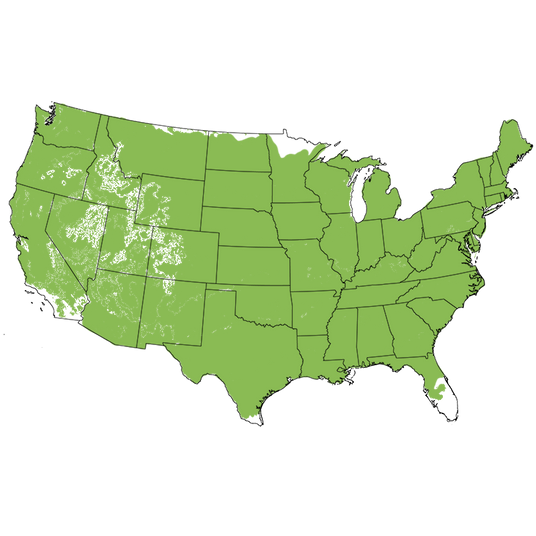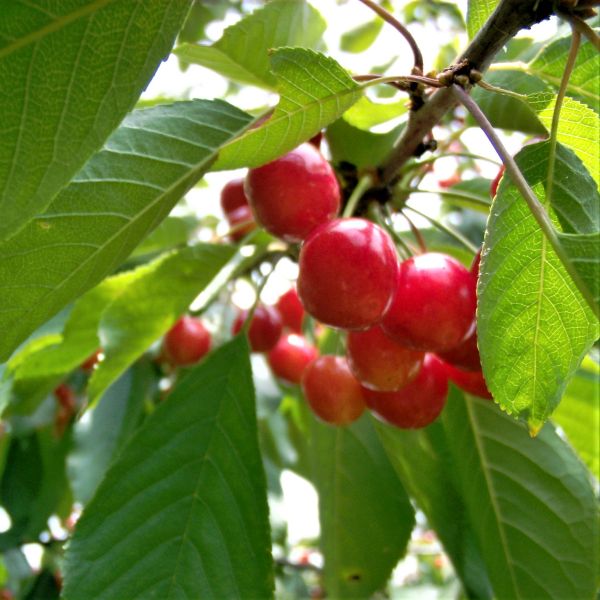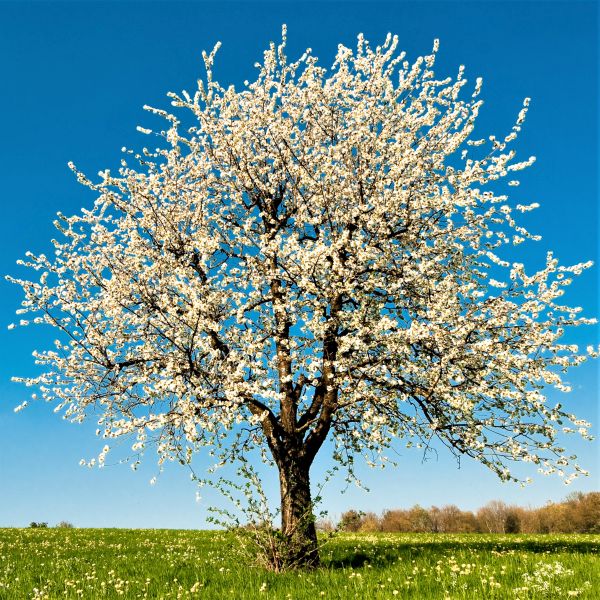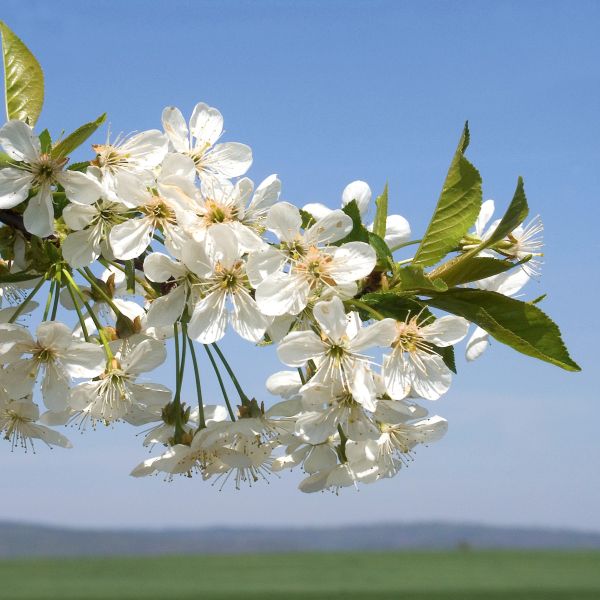Montmorency Cherry Tree
Prunus cerasus 'Montmorency'
Plant Sentry™
Plant Sentry™

Plant Sentry™ Protected
Your order is protected by our compliance system that:
- Prevents restricted plants from shipping to your state
- Ensures plants meet your state's agricultural requirements
- Protects gardens from invasive pests and diseases
Delivery and Shipping
Delivery and Shipping
Delivery and Shipping
Fast, Safe Plant Delivery
Ships in 3-4 business days • Tracking provided • Weather protected
| Under $50 | $9.99 |
| $50 - $99.99 | $14.99 |
| $100 - $149.99 | $16.99 |
| $150 - $198.99 | $24.99 |
| $199+ | FREE |
✓ Zone-specific timing • ✓ Professional packaging • ✓ Health guarantee
Understanding Plant Options
Nature Hills offers plants in two main formats:
- Container Plants: Grown in pots with soil, sized by container volume and plant age
- Bare Root Plants: Dormant plants without soil, sized by height measurements
Container Plant Sizes
Container sizes indicate plant age and growing capacity rather than liquid volume equivalents. Our containers follow industry-standard nursery "trade gallon" specifications, which differ from standard liquid gallon measurements.
Young Plants (6 months to 18 months old)
| Container Size | Actual Volume | Metric Equivalent |
|---|---|---|
| 2" x 2" x 3" | 0.18 - 0.21 dry quarts | 0.20 - 0.23 dry liters |
| 4" Container | 0.31 - 0.87 dry quarts | 0.35 - 0.96 dry liters |
| 4.5" Container | 0.65 dry quarts | 0.72 dry liters |
| 6" Container | 1.4 dry quarts | 1.59 dry liters |
| 1 Quart | 1 dry quart | 1.1 dry liters |
| 5.5" Container | 1.89 dry quarts | 2.08 dry liters |
Established Plants (18 months to 2.5 years old)
| Container Size | Actual Volume | Metric Equivalent |
|---|---|---|
| 2 Quart | 2 dry quarts | 2.2 dry liters |
| #1 Container | 2.26 - 3.73 dry quarts | 2.49 - 4.11 dry liters |
| 5" x 5" x 12" | 3.5 - 4.3 dry quarts | 3.85 - 4.74 dry liters |
Mature Plants (2-4 years old)
| Container Size | Actual Volume | Metric Equivalent |
|---|---|---|
| #2 Container | 1.19 - 1.76 dry gallons | 5.24 - 7.75 dry liters |
| #3 Container | 2.15 - 2.76 dry gallons | 8.14 - 12.16 dry liters |
Large Plants (3-5 years old)
| Container Size | Actual Volume | Metric Equivalent |
|---|---|---|
| #5 Container | 2.92 - 4.62 dry gallons | 12.86 - 20.35 dry liters |
| #6 Container | 5.25 - 6.01 dry gallons | 23.12 - 26.42 dry liters |
| #7 Container | 5.98 - 6.53 dry gallons | 26.34 - 28.76 dry liters |
Bare Root Plants
Bare root plants are sold by height from the root system to the top of the plant. Plants may exceed minimum height requirements.
Common Sizes:
- Trees: 1 foot, 2 feet, 3 feet, 4 feet, 5 feet, 6 feet
- Shrubs & Perennials: 1 foot, 18 inches, 2 feet
Important Notes
Container Volume Specifications
- Trade Gallon Standard: Our containers follow industry-standard "trade gallon" specifications established by the American National Standards Institute (ANSI Z60.1) for nursery stock
- Volume Variations: Actual soil volume may vary due to plant root systems and growing medium settlement
- Age Indicators: Container size primarily indicates plant age and maturity rather than liquid volume equivalents
Growing Conditions
- Plant size can vary based on variety and growing conditions
- Container size helps indicate plant maturity and establishment level
- Larger containers generally mean more established root systems and faster landscape establishment
Seasonal Availability
- Bare root plants are available seasonally when dormant
- Container plants are available throughout the growing season
- Specific varieties may have limited availability in certain sizes
Questions?
For questions about specific plant sizes or availability, please contact our plant experts who can help you choose the right size for your landscape needs.

Plant Sentry™ Protected
Your order is protected by our compliance system that:
- Prevents restricted plants from shipping to your state
- Ensures plants meet your state's agricultural requirements
- Protects gardens from invasive pests and diseases
Plant Profile & Growing Essentials
Cold hardy, Self-pollinating, Flowering, Edible, Ornamental Berries/Fruit, Thornless, and Attracts pollinators
Specifications
Specifications
-
Botanical Name
-
Height
-
Width
-
Growing Zones
-
Sunlight
-
Growth RateModerate
-
Flower Color
-
Leaf Color
-
Fall Color
-
NativeYes
-
Pollinator FriendlyYes
-
Pollinator Required
-
FragrantYes
-
Bloom PeriodLate Spring
-
Does Not Ship ToAK, FL, HI, ID, MT, OR
Planting & Care
Planting & Care
Incredible Flavor in Pies Montmorency Cherry Tree
- Large Bright Red, Amber Fleshed Fruit
- Popular Cherry For Pies
- Heavy Bearing
- Disease Resistant
- Ripens Late In The Season
- Medicinal Properties
- Self Pollinating
- Juiced, Baked Goods, Preserves
- Freezes & Dries Well!
- Smothered in White Spring Blossoms
- Ornamental Qualities!
- 700 Chill Hours for Fruiting
Centuries ago, in France's Montmorency Valley, farmers with a taste for the best sour cherries began cultivating Montmorency Sour Cherry (Prunus cerasus 'Montmorency'). It is now the most popular variety of Sour Cherry because...well...because it simply is the best!
Montmorency's tart cherries are large, bright red jewels! Producing bushels of bright-red cherries with firm yellow flesh, that when pressed, provides clear, tangy juice that is irresistible once you've tried it. This slightly sour fruit is wonderful, and many consider it the ultimate choice for pies.
But don't forget to try it in a cobbler or other types of desserts. You can turn these tart berries into tasty preserves, freeze them for later, or even dry them for a wonderfully healthy snack that kids love.
With that being said, do not overlook the medicinal value of the Montmorency Sour Cherry. Do you feel a little achy after spending all day in the garden? No problem. These tart cherries are said to ease muscle pain and soreness, relieve symptoms of arthritis, lower stress, improve sleep. It may even improve your thinking ability, memory, and brighten your mood. Now, that's a cherry on your sundae.
In the spring, the Montmorency Sour Cherry's blooms will make you forget the cold chills of winter. It's hard to beat viewing your tree's fragrant, bright white blossoms, swaying in a spring breeze in spring. Bees, butterflies and hummingbirds agree and will flock to your tree, and while pollinating it, they can pollinate the rest of your garden as well.
Heavy bearing on their own, consider planting a partner cherry tree, though, because two pollinate better than one, and it will increase your yield.
The Montmorency Sour Cherry tolerates the frigid winter weather quite well. You can count on a heavy crop of red fruit as this variety ripens later in the season than most. These are favorite trees of small family farms and large commercial orchards alike!
How to Use Montmorency Sour Cherry In The Landscape
This fruiting tree has all the ornamental qualities of a flowering cherry tree! Blooming early in the spring, heralding the arrival of the season in no uncertain terms. It grows quickly, so you needn't wait long after it goes in the ground before you're ready to capture "oohs" and "aahs" from its immediate fans.
During the summer, enjoy the shade from the large, oval leaves that seem to flit and flutter with every puff of wind. When fall rolls around, those same leaves turn a brilliant array of yellow to bronze hues.
Plant one or more near your patio and seating areas to truly reap the benefits of their bountiful bloom, cooling shade and juicy fruit!
Just when you think the Montmorency Sour Cherry is done for the year, it becomes laden on every branch and limb with bright red jewels that taste far superior compared to those you’d find in the grocery store!
Montmorency Cherry is a boon to birds looking for a pre-winter feast! The fruit attracts songbirds to your yard in the fall and winter. The smaller size means easily installing bird netting so your feathered friends don't make off with all of your harvest!
And in winter, you'll get a chance to appreciate the magnificent branch structure and unique Cherry tree bark. Every little bit helps in winter, and this delightful tree will catch your eye even when it's cold outside.
Smaller in size and stature, Montmorency fits right into an existing orchard setting or makes an easy, space-saving fruiting tree in smaller urban yards. Edible Landscaping is all the rage now, so why not get double duty from your garden? Ornamental? Shade? Tangy flavored fruit? You got it all on Montmorency Sour Cherry!
#ProPlantTips For Care
You will want to find your Montmorency Sour Cherry a home where it can bask in full sun and stay rooted and healthy in drained sandy soil to loamy soil. You can enhance the nutrients in your soil by spading in compost, leaves, and manure to keep your tree happy for years to come.
Winter hardy to the United States growing zones 4-9, these varieties of Montmorency tart Cherries are highly adaptable, plus, Montmorency is highly disease resistant and cold tolerant!
Loving the full sun, and blooming the absolute best when planted in as much sunlight as you can provide. More sun means more blooms and more blooms mean more fruit! Montmorency is naturally heavy bearing, so get ready for a treat!
Water young trees well to ensure they become well established in their first year. Doing best in any kind of soil, these Cherry trees do require well-draining conditions and cannot sit in soggy soils. Be sure to include the Nature Hills Root Booster to give your root system the healthy jump-start it needs to get growing beautifully!
All fruit trees and plants appreciate a layer of mulch over their root zone. It not only cools the roots in summer and insulates them from the heat in summers, but a generous layer of mulch also protects them from winter's chill and holds in more moisture; so that means less watering for you!
While many say, "an apple a day, keeps the doctor away," you can say the same thing for the Montmorency Sour Cherry because of its medicinal qualities. And we bet that you never tasted medicine as delicious and juicy as your Montmorency Sour Cherry!
Find out exactly why French Cherry planters fell for the Montmorency Sour Cherry by ordering your own from Nature Hills Nursery today!
Frequently Asked Questions
What is Montmorency Cherry good for?
The Montmorency Cherry tree is a highly ornamental flowering tree that also produces a fantastic harvest of delicious tart cherries for your fresh eating and baking needs! Flowering and fruiting Cherry trees are dual-purpose edible landscaping plants!
Can you eat Montmorency Cherries?
Montmorency Cherry trees are very flavorful tart cherries that can be eaten fresh or used for a wide variety of baked goods and preserves.
Is Montmorency Cherry the same as Tart Cherry? Are Montmorency Cherries sweet or sour?
The Montmorency Cherry is a tart-flavored or sour cherry and is considered different than a sweet cherry tree.
What Shipping Options Do You Offer?
NatureHills.com works closely with our growers and nursery professionals to ensure we ship when it is most appropriate for your area. Our goal is to deliver the hardiest plants by avoiding extreme high and low temperatures. Check out our shipping schedule for more information and to learn our wills and won’ts when it comes to shipping plants. Find your Montmorency Cherry Tree for sale here at NatureHills.com!
Dependable Variety with an Ancient Past
The Montmorency Cherry has a very long and clouded history. The sour cherry has been a part of recorded history dating back to the Greeks in 300 BCE. They were a part of the diet of the Persians and Romans well before 1 AD.
The Romans are credited with planting sour cherries along the highways as food for the travelers, and Roman soldiers carried them dried into battle. Their high nutritional value has been understood for well over 2000 years.
Coming out of the early natural cross thought to be Prunus avium (Sweet Cherry) and the Prunus fruitcosa (the Ground Cherry), resulted in today's Prunus cerasus (Sour Cherry), but the introduction of the Montmorency that we know today was not clear.
In the early 17th century, out of the Montmorency Valley of France, many sour cherries began being introduced. As cited by U.P. Hedrick, in his classic 'The Cherries of New York,' 1913, "Unfortunately several quite distinct cherries bear the name Montmorency and it has been most difficult to separate them in pomological literature. To make matters worse, all of them have been much confused with other varieties, Early Richmond in particular."
By the mid-17th century, there began to emerge a single variety recognized as Montmorency, as a chance seedling of Cerise Hative, or Cerise Commune cherries.
It was not until the early 1900's that the Montmorency would be planted regularly. It was readily apparent that this was one of the most adaptable varieties of cherries offered. Montmorency quickly became the variety of choice for all of the major sour cherry growing regions.
This included Western New York, along the Great Lakes in Western Michigan, and in the famous cherry growing region of Door county in Eastern Wisconsin. It remains the number one cherry in all these top cherry growing regions today.













